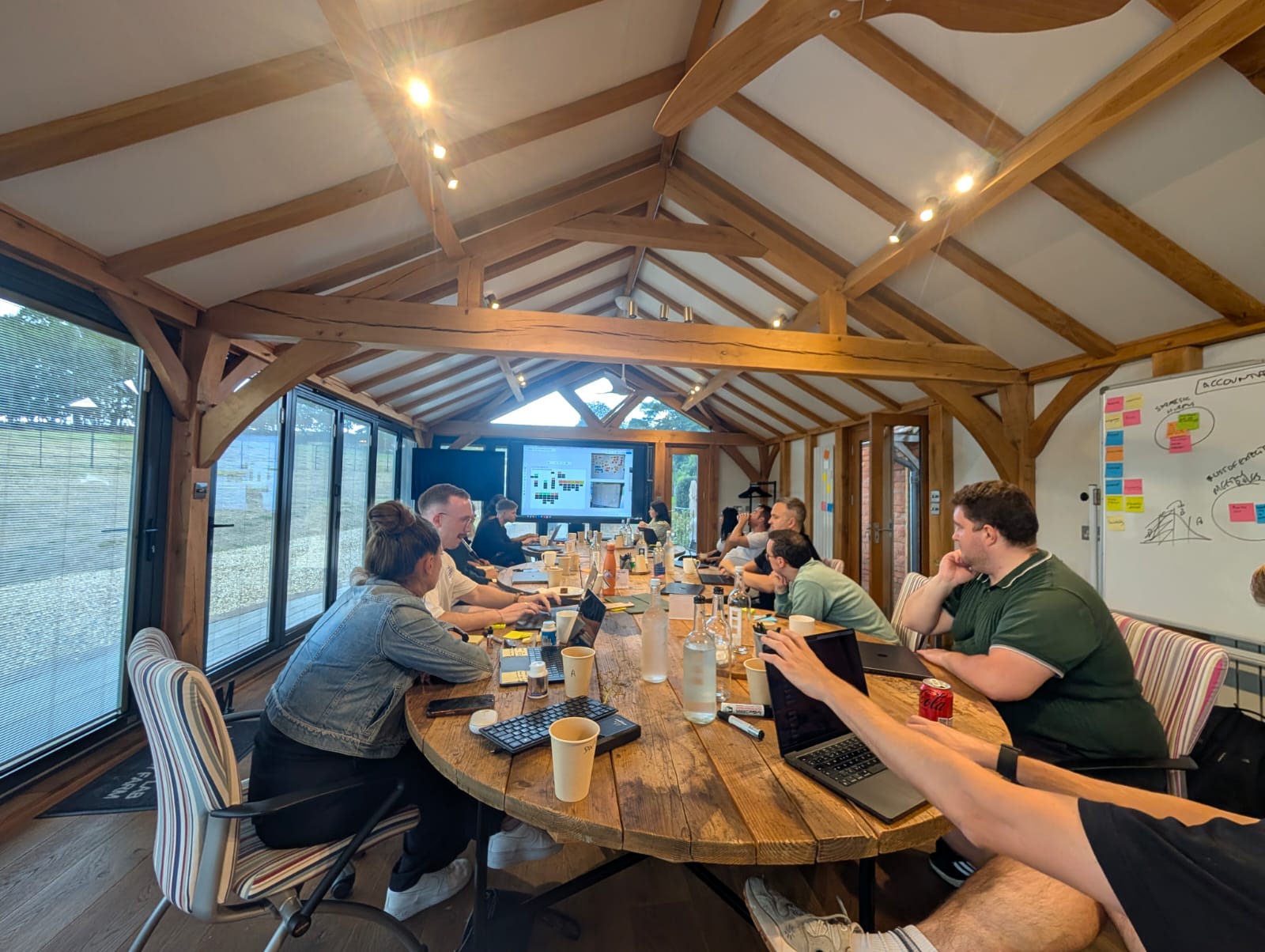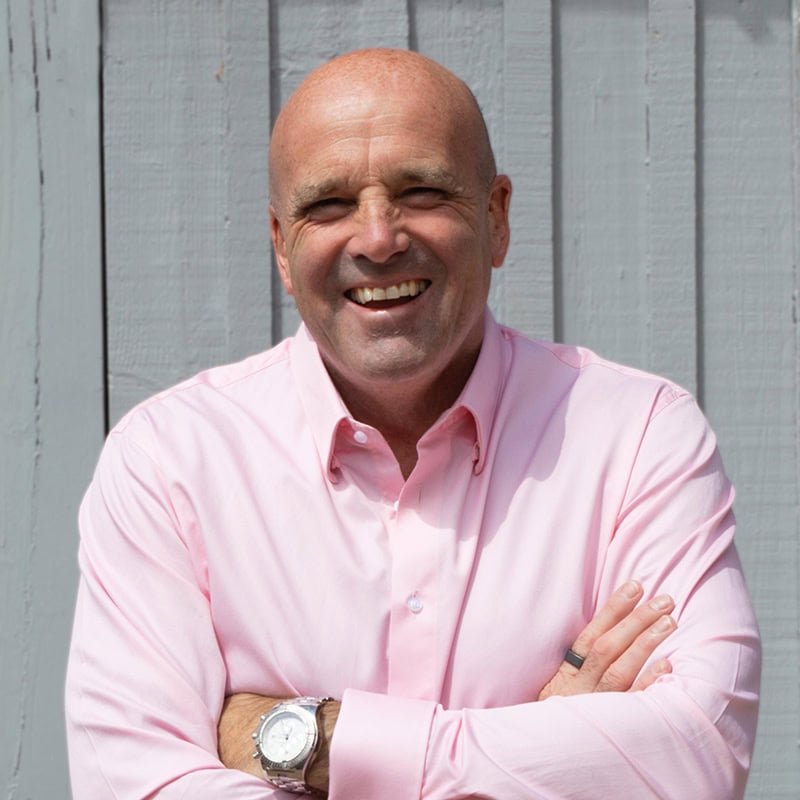Quick Summary
Takeaways
-
Fixing your weakest process unlocks the biggest gains—stop faffing with what’s already fine.
-
Every business has a choke point; your job is to find it and attack it relentlessly.
-
Process optimisation is a team sport—no silos, no blame, just shared accountability.
-
If it doesn’t improve profit, speed, or value, it’s not optimisation—it’s theatre.
Have you been faffing about making small tweaks here and there in your business, wondering why nothing really improves? Newsflash: polishing the shiny bits won’t make the slightest bit of difference. If you’re serious about growth, you need to start fixing the parts that are actually broken. Buffing the headlights on your Ferrari isn’t going to improve the performance if you’ve got four flat tyres.
As I’ve mentioned in the last few weeks, I’m close to launching a framework that will help founders find their freedom again. We do this through breaking a business down into sections, with each important area having three accelerators. Focusing on those accelerators will do exactly what you’d expect – it will speed up your growth and help you scale faster. This week’s accelerator is process optimisation.
Process optimisation isn’t about perfection. It’s about traction. It’s about finding the single point of failure that’s throttling your progress—and attacking it with everything you’ve got. In his seminal business bible The Goal, Eli Goldratt nailed it: every process has a constraint. One shitty thing that’s slowing everything else down. Your job is to find that weakest link and throw everything you have at it.
Every system’s got a weak point – yours does too
Goldratt wasn’t some business guru on a stage with a clicker—he was a physicist. A scientist obsessed with flow. And he figured it out: every system, no matter how complex, has a weakest link. One issue where the solution will yield the biggest possible return. So fix that weakest link. Once it’s done, find the next place where the flow is being held up and fix that too. Repeat until every part of the process is operating efficiently, and you’ve got yourself an efficient system. Ignore those problems and focus on the bits that are already working, and you might as well just set fire to £50 notes and dance around them in the boardroom.
Goldratt first identified the issue as a scientific issue. But in a business context, that means zooming in on your operations and asking: where’s the friction? Where do things slow down, fall through the cracks, or get stuck in endless cycles of delay
And let’s be clear: if you’re not making enough sales, stop reading. Your first constraint is demand. Fix your pipeline before you start tinkering with process.
But if revenue’s flowing and things still feel clunky, it’s time to trace the money through your quote-to-cash journey. Where exactly is the value getting blocked?
The usual suspects
Here are the bottlenecks we see most often—and they’re rarely where you think they are:
- Lead generation and sales conversion
No pipeline, no party. If you’re not getting enough qualified leads—or deals are stalling mid-funnel—your marketing and sales function is limping. Don’t kid yourself with “brand awareness” bollocks. If it’s not converting, it’s not working. - Customer churn
Winning new business but bleeding customers out the back door? That’s not growth—it’s chaos. High churn is a symptom of a bigger disease: bad onboarding, broken service, or poor product-market fit. Whatever it is, fix it or forget scale. - Lack of customer expansion
Got happy customers but zero upsell? If no one’s buying more than once, you’re leaving easy money on the table. This isn’t a retention issue—it’s a value issue. They like you. But they don’t need more of you. Why not?
Stop tinkering and start fixing
Process optimisation isn’t about efficiency—it’s about constraint elevation. If it’s not holding you back, don’t touch it. That smooth-running team you keep “improving”? Leave them alone. Focus on the bit that’s broken. The part that’s slowing everything else down.
Find the choke point. Elevate it. Then repeat.
That’s how real businesses scale. Not with dashboards and workshops—but with ruthless focus on what matters most.
How to find your broken bits
You don’t need a crystal ball to do all this. You need a Target Operating Model (TOM) – which we talked about a couple of weeks ago. Think of it as a high-level map of how you make money. End to end. Marketing. Sales. Delivery. Customer Success. Billing. Plus all the stuff that keeps the lights on—Finance, HR, IT, ops. The lot.
We get your exec team in a room, sharpies in hand, and we map the whole value chain. Then comes the fun part. We go function by function and ask the team:
“Is this Red, Amber or Green?”
Not some BS leadership tick-box exercise—this is proper, no-holds-barred team feedback. Everyone gets a say. Nobody marks their own homework.
Maybe your Marketing Director’s been cheerfully waving the “All Green Here!” flag in leadership meetings. But in the room? Sales and Support quietly pipe up. “Actually, we’re still dealing with half-baked leads and confused customers.” Boom. Marketing’s now flashing red. Not because one person says so—because the team says so.
By the end, you’ve got a one-page view of your business’s operational health—and a list of agreed pressure points that need immediate attention.
And here’s rule number one: Don’t waste a second on Green. Green means “working.” Move on. The value’s in fixing the Reds.
We literally ran this exercise last week with the team at FX Digital. They came down to The Management Lab here at Monkhouse & Company, sketched out their TOM on the wall—stickies everywhere. They identified their Reds, their Ambers and their Greens. Now they know exactly where to focus. No guesswork. No noise. Just clarity—and a plan.

Once you’ve spotted a Red—say Marketing’s falling short—that becomes the team’s number one priority for the next 90 days. Not “someone else’s problem.” Not “we’ll get to it later.” It’s everyone’s focus until it’s fixed.
The goal? Simple: turn that Red into an Amber or Green in a quarter. That’s when process optimisation stops being theory and starts driving results.
Now the real work begins. You dig in. What’s actually broken? Maybe Marketing isn’t generating enough SQLs to keep Sales moving. Or maybe they’re attracting bad-fit customers who churn after three months. Either way, you’re not guessing anymore—you’re diagnosing.
And while you’re in there, ask the hard questions:
- Do the team have clear, role-specific scorecards?
- Are they tracking the right metrics daily and weekly?
- Or are they just “busy” with activity that deliver the sum total of bugger all?
The thing to realise is that solving your biggest process constraint is not solo work. It’s a team game. Once you’ve identified the Red on your Target Operating Model, it becomes the collective responsibility of the entire executive team to fix it, not just the poor sod “in charge” of that function. This is a big mindset shift, and where most leadership teams screw it up. They spot a Red, nod sympathetically at the department head, then crack on with business as usual. Wrong, wrong, wrong. If Marketing is Red, it’s not Marketing’s problem. It’s everyone’s problem.
This isn’t about blame. It’s about ownership. Cross-functional problems need cross-functional solutions. That’s how grown-up teams operate.
I remember working with a tech firm where the Head of Customer Support admitted her area was Amber. But instead of getting defensive, she had an epiphany. “I can never get Support to Green unless we fix Marketing.” Support was drowning in unhappy customers whose expectations hadn’t been set properly, or who were a bad fit in the first place. Why? Because Sales, starved of leads, had been selling to anyone with a pulse – a classic downstream effect of a Marketing constraint.
From that day, the entire exec team made fixing Marketing their mission for the quarter. This cross-functional approach is the essence of process optimisation done right – breaking out of silos and tackling the actual problem as a united front. It’s also why I often tell CEOs to ditch their one-to-one meetings with execs and coach the team as a whole instead.
I’m a big believer in short, sharp daily huddles—15 minutes, tops. Everyone answers one question: What are you doing today to move the Red to Amber? That’s it.
Yes, some execs roll their eyes at the thought of a daily meeting. I get it. Nobody’s gravestone reads “I wish I’d been in more meetings.” But done right, this isn’t a meeting—it’s a moment of momentum. And it works because the accountability shifts. It’s not about reporting to the CEO. It’s peer-to-peer pressure. The team holds itself accountable. That’s where the magic happens.
Once you build this habit, something strange happens. Your execs stop acting like siloed department heads and start playing as an actual team. Solving horrible, business-critical problems becomes fun. Honest.
It’ll also stop you wanting to drown yourself in your mineral water every time someone troops to the front of the room to present their PowerPoint update on ‘What my function did this week’. You might as well be writing one of those essays they made you do at school about ‘What I did in my summer holidays.’ You’re adding no value if your top team does that. You’re one team, one goal, one shared scoreboard. Either you’re all winning, or none of you are.
You want impact? Cut the bullshit. Kill the vanity metrics. Get everyone aligned on what matters—and fix what’s broken. Fast.
Taking a deeper dive
But sometimes you need to go deeper—that’s where my Crisis Cracker tool comes in. You start by listing everything that’s bugging you about the business. No filtering, just raw honesty. Narrow it down to five core issues. One might be poor planning, another could be communication – look for those common failings that are popping up in multiple places.
Then, drill deeper to find the one-word root cause behind all the symptoms. This is your leverage point. A single word that is the source of your organisation’s problems.
Once you have your word, the real work starts. You identify up to four different projects that can be undertaken to address the issues you’re facing. NONE of these should be assigned to you as CEO – this is about freeing your time not sorting everyone else’s shit. You then expand each project into more detail, identifying the steps needed to get things done.
By condensing issues down to a single word then building solutions back up from that same word, you’ve identified the golden thread running through your business – the issue that’s causing the blockage. The result? Absolute clarity on what’s broken, why it’s broken, and precisely what to fix first. No guessing. Just targeted action. The results will quickly start to speak for themselves.
It starts with the right people
None of the above works if you don’t have the right team on the field. Often, when we go through the Target Operating Model, it becomes clear that a bigger issue is lurking – a couple of leaders just aren’t up to scratch. In constraint terms, they are the bottleneck. As business guru Jim Collins famously put it, “Get the right people on the bus” In Scaling Up vernacular, Rockefeller Habit #1 is having a healthy, aligned executive team.
Your company will never outperform the caliber of your top team – it simply can’t happen. So if one of your execs is consistently underwhelming, you need to address that pronto. Process optimisation starts with talent optimisation.
In practice, we often begin by doing a talent assessment for the leadership group – rating each person as an A, B or C-Player. If even one member of the team is a weak link who can’t carry their weight, that’s going to be the constraint dragging everything else down.
Show me the money
Finally, let’s talk about the only scoreboard that really matters: profit.
You’re not optimising processes for shits and giggles. You’re doing it to build a business that’s sharper, faster, and harder to beat. Because at the end of the day, profit is the purest measure of competitive advantage.
Not revenue. Not headcount. Not how busy everyone looks on Slack.
Net profit.
Cold. Hard. Cash.
And not in isolation either—it’s how your profit stacks up against the competition. That’s the game. That’s how you know whether your business is genuinely winning or just coasting.
A business consistently needs around 10% net profit just to be sustainable, and closer to 15–20% to really thrive. Hit 20%+ and you’re likely outpacing your industry. All the process optimisation in the world is moot if it doesn’t translate into superior financial results. Competitive advantage = doing what your competitors can’t or won’t, and making more money as a result.
And of course, as you drive process improvements, measure the bloody impact.
Is what you’re doing actually working? Are you cutting costs, speeding things up, lifting revenue, increasing customer lifetime value? If not, what’s the point?
That’s the beauty of focusing on constraints—when you fix the right thing, the results hit fast. You don’t need a six-month review to know it’s working. The numbers move. Immediately. And if they don’t? You’ve fixed the wrong thing. Go again.
Lose the faff and gain some focus
Process optimisation done right isn’t easy. It’s uncomfortable. It’s exposing. And it’s exactly what your business needs. It takes honesty about what’s broken and the discipline to block out the noise. No more tinkering. Just focused, deliberate action.
It takes a team—no silos, no turf wars, no fragile egos. Just leaders pulling in the same direction. And it only works if you’ve got the right people on the field—A-players who thrive under pressure and get a kick out of solving hard problems.
So stop pissing about finessing parts of the business that are already fine.
Roll up your sleeves. Rally the team. Find the bottleneck. Fix it. Then do it again.
Written by business coach and leadership coaching expert Dominic Monkhouse. You can order your free copy of his book, Mind Your F**king Business here.

